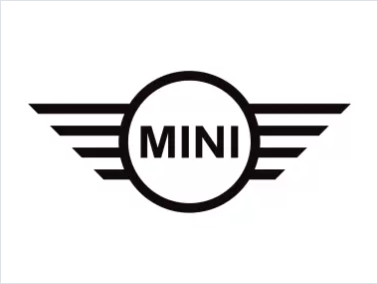An Guide To Key Programming In 2023
What Are the Different Types of Key Programming?
The process of programming a reprogramming car keys key allows you to have a spare key fob programing near Me for your vehicle. You can program a key through a car dealer or a hardware shop, but it is usually a long and costly procedure.
These units are usually bidirectional OBD-II devices. These tools can extract PIN codes, EEPROMs, and modules from the vehicle.
Transponder codes
A transponder code is a four-digit number that is used to identify an aircraft. Its purpose to assist Air Traffic Control identify the aircraft, and ensure it does not get lost on radar screens. There are various codes that can be used and they are usually assigned by an ATC facility. Each code has a specific meaning and is used for different types of aviation activities.
The number of available codes is limited, but they are categorized into different groups based on their use. For example, a mode C transponder will only utilize the primary and secondary codes (2000, 7500, and 7000). There are also non-discrete codes used in emergencies. These codes are utilized by ATC when it is unable to determine the call number of the pilot or the location of the aircraft.
Transponders transmit information and an unique identification code to radars using radio frequency communication. There are three different RF communication modes, mode A, mode S, and mode C. The transponder can send different formats of data to radars based on the mode. These include identification codes as well as aircraft location and pressure altitude.
Mode C transponders also transmit the pilot's callsign as well. They are typically used for IFR flights or flights at higher altitudes. The ident button on these transponders is often called the «squawk» button. When a pilot presses squawk, ATC radar picks it up and displays the information on the screen.
It is crucial to alter the code of a transponder mode C correctly. If the wrong code is entered, it could set off bells in ATC centers and make F16s scramble to find the aircraft. It's best to enter the code while the aircraft is in standby.
Some vehicles require special key programming tools to reprogram a transponder into a new key. These tools communicate with the vehicle's computer to enter programming mode, and also clone existing transponders. These tools may also be capable of flashing new codes into an EEPROM chip, module or Key Fob programing near me other device depending on the vehicle model. These tools are available as standalone units or be integrated into more sophisticated scan tools. These tools are also fitted with a bidirectional OBD-II plug and can be utilized on a variety of reprogramming car key models.
PIN codes
Whether used in ATM transactions, such as POS (point of sale) machines or as passwords for secure computers PIN codes are an important part of our modern day. They help authenticate banks with cardholders, government agencies with citizens, businesses with employees, and computers that have users.
Many people believe that longer PIN codes are more secure, but this is not always the situation. According to a research conducted by researchers from the Max Planck Institute for Security and Privacy and Ruhr University in Germany A six-digit PIN code is not more secure than one with four digits.
It is also advisable to avoid repeating digits or consecutive numbers, as they are easy for hackers to guess. Also, try to mix numbers and letters, as these are harder to hack.
Chips that store EEPROM
EEPROM chips store data even when the power is off. These are great for devices that store data and require access to it at a later date. These chips are employed in remote keyless system and smart cards. They can also be programmed for different uses, such as storing configurations or setting parameters. They are an excellent tool for developers as they can be programmed without having to remove them from the machine. They can also be read using electricity, though they only have a limited time of retention.
In contrast to flash memory, EEPROMs can be erased several times without losing any data. EEPROM chips are made up of field effect transistors with a floating gate. When a voltage is applied to the gate, electrons are entrapped in the gate and their presence or absence is translated to information. Based on the design and status of the chip, it could be changed in a variety of ways. Certain EEPROM chips are bit- or byte addressable, while others require a complete block to be written.
To program EEPROMs, a programmer must first verify that the device functions correctly. Comparing the code with an original file is a method to check this. If the code isn't the same, then the EEPROM could be in error. This can be fixed by replacing it with a fresh one. If the problem persists it is possible that there is something else wrong with the circuit.
Comparing the EEPROM with another chip in the same circuit is also an opportunity to confirm its authenticity. This can be done using any universal programer that allows you to compare and read EEPROMs. If you're unable to obtain a clear reading, you can blow the code into a brand new chip and compare them. This will help you pinpoint the problem.
It is vital that anyone working in the building technology industry is aware of the way each component functions. Failure of just one component can impact the performance of the entire system. This is why it's vital to test the EEPROM chips on your motherboard before using them in production. You can be assured that your device will function as expected.
Modules
Modules are a type of programming structure that allows for the creation of independent pieces of code. They are typically used in large complex projects to manage dependencies and offer an easy separation between various areas of the software application. Modules can be used to develop code libraries that work with multiple apps and devices.
A module is a collection of classes or functions that a program can use to execute services. A program uses modules to enhance functionality or performance of the system, and is then shared with other programs that utilize the same module. This makes large projects easier to manage and improve the quality of the code.
The method by the way a module is utilized in a program is determined by the interface of the module. A well-designed interface is clear and easily understood, making it simple for other programs to utilize the module. This is referred to as abstraction by specification and is very beneficial even if there's only one programmer working on a moderately-sized program. It is even more crucial when there is more than one programmer working on a program which has multiple modules.
Typically, a program uses a small subset of the module's capabilities. Modules reduce the number of places where bugs could occur. For instance when a function is changed in a particular module every program that uses the function will be automatically updated to the latest version. This can be much faster than changing the entire program.
The import statement allows the contents of a module accessible to other applications. It can take several forms. The most popular method to import namespaces is by using the colon followed by a list of names that the program or other modules want to use. The NOT: statement can be used by a program to define what it doesn't want to import. This is especially useful when mucking around in the interactive interpreter for testing or discovering purposes, because it lets you quickly get access to everything that an application has to offer without typing too much.
The process of programming a reprogramming car keys key allows you to have a spare key fob programing near Me for your vehicle. You can program a key through a car dealer or a hardware shop, but it is usually a long and costly procedure.
These units are usually bidirectional OBD-II devices. These tools can extract PIN codes, EEPROMs, and modules from the vehicle.
Transponder codes
A transponder code is a four-digit number that is used to identify an aircraft. Its purpose to assist Air Traffic Control identify the aircraft, and ensure it does not get lost on radar screens. There are various codes that can be used and they are usually assigned by an ATC facility. Each code has a specific meaning and is used for different types of aviation activities.
The number of available codes is limited, but they are categorized into different groups based on their use. For example, a mode C transponder will only utilize the primary and secondary codes (2000, 7500, and 7000). There are also non-discrete codes used in emergencies. These codes are utilized by ATC when it is unable to determine the call number of the pilot or the location of the aircraft.
Transponders transmit information and an unique identification code to radars using radio frequency communication. There are three different RF communication modes, mode A, mode S, and mode C. The transponder can send different formats of data to radars based on the mode. These include identification codes as well as aircraft location and pressure altitude.
Mode C transponders also transmit the pilot's callsign as well. They are typically used for IFR flights or flights at higher altitudes. The ident button on these transponders is often called the «squawk» button. When a pilot presses squawk, ATC radar picks it up and displays the information on the screen.
It is crucial to alter the code of a transponder mode C correctly. If the wrong code is entered, it could set off bells in ATC centers and make F16s scramble to find the aircraft. It's best to enter the code while the aircraft is in standby.
Some vehicles require special key programming tools to reprogram a transponder into a new key. These tools communicate with the vehicle's computer to enter programming mode, and also clone existing transponders. These tools may also be capable of flashing new codes into an EEPROM chip, module or Key Fob programing near me other device depending on the vehicle model. These tools are available as standalone units or be integrated into more sophisticated scan tools. These tools are also fitted with a bidirectional OBD-II plug and can be utilized on a variety of reprogramming car key models.
PIN codes
Whether used in ATM transactions, such as POS (point of sale) machines or as passwords for secure computers PIN codes are an important part of our modern day. They help authenticate banks with cardholders, government agencies with citizens, businesses with employees, and computers that have users.
Many people believe that longer PIN codes are more secure, but this is not always the situation. According to a research conducted by researchers from the Max Planck Institute for Security and Privacy and Ruhr University in Germany A six-digit PIN code is not more secure than one with four digits.
It is also advisable to avoid repeating digits or consecutive numbers, as they are easy for hackers to guess. Also, try to mix numbers and letters, as these are harder to hack.
Chips that store EEPROM
EEPROM chips store data even when the power is off. These are great for devices that store data and require access to it at a later date. These chips are employed in remote keyless system and smart cards. They can also be programmed for different uses, such as storing configurations or setting parameters. They are an excellent tool for developers as they can be programmed without having to remove them from the machine. They can also be read using electricity, though they only have a limited time of retention.
In contrast to flash memory, EEPROMs can be erased several times without losing any data. EEPROM chips are made up of field effect transistors with a floating gate. When a voltage is applied to the gate, electrons are entrapped in the gate and their presence or absence is translated to information. Based on the design and status of the chip, it could be changed in a variety of ways. Certain EEPROM chips are bit- or byte addressable, while others require a complete block to be written.
To program EEPROMs, a programmer must first verify that the device functions correctly. Comparing the code with an original file is a method to check this. If the code isn't the same, then the EEPROM could be in error. This can be fixed by replacing it with a fresh one. If the problem persists it is possible that there is something else wrong with the circuit.
Comparing the EEPROM with another chip in the same circuit is also an opportunity to confirm its authenticity. This can be done using any universal programer that allows you to compare and read EEPROMs. If you're unable to obtain a clear reading, you can blow the code into a brand new chip and compare them. This will help you pinpoint the problem.
It is vital that anyone working in the building technology industry is aware of the way each component functions. Failure of just one component can impact the performance of the entire system. This is why it's vital to test the EEPROM chips on your motherboard before using them in production. You can be assured that your device will function as expected.
Modules
Modules are a type of programming structure that allows for the creation of independent pieces of code. They are typically used in large complex projects to manage dependencies and offer an easy separation between various areas of the software application. Modules can be used to develop code libraries that work with multiple apps and devices.
A module is a collection of classes or functions that a program can use to execute services. A program uses modules to enhance functionality or performance of the system, and is then shared with other programs that utilize the same module. This makes large projects easier to manage and improve the quality of the code.
The method by the way a module is utilized in a program is determined by the interface of the module. A well-designed interface is clear and easily understood, making it simple for other programs to utilize the module. This is referred to as abstraction by specification and is very beneficial even if there's only one programmer working on a moderately-sized program. It is even more crucial when there is more than one programmer working on a program which has multiple modules.
Typically, a program uses a small subset of the module's capabilities. Modules reduce the number of places where bugs could occur. For instance when a function is changed in a particular module every program that uses the function will be automatically updated to the latest version. This can be much faster than changing the entire program.
The import statement allows the contents of a module accessible to other applications. It can take several forms. The most popular method to import namespaces is by using the colon followed by a list of names that the program or other modules want to use. The NOT: statement can be used by a program to define what it doesn't want to import. This is especially useful when mucking around in the interactive interpreter for testing or discovering purposes, because it lets you quickly get access to everything that an application has to offer without typing too much.

 Typically, car key
Typically, car key 
 It's worth spending some money to have your spare key programmed. You can also look into your vehicle's bumper-tobumper warranty or auto club membership to see whether it covers key fob programming.
It's worth spending some money to have your spare key programmed. You can also look into your vehicle's bumper-tobumper warranty or auto club membership to see whether it covers key fob programming. As cars have become more electronic, key programming has become an essential service that could bring in a lot of revenue. A lot of shops do not offer this service.
As cars have become more electronic, key programming has become an essential service that could bring in a lot of revenue. A lot of shops do not offer this service.